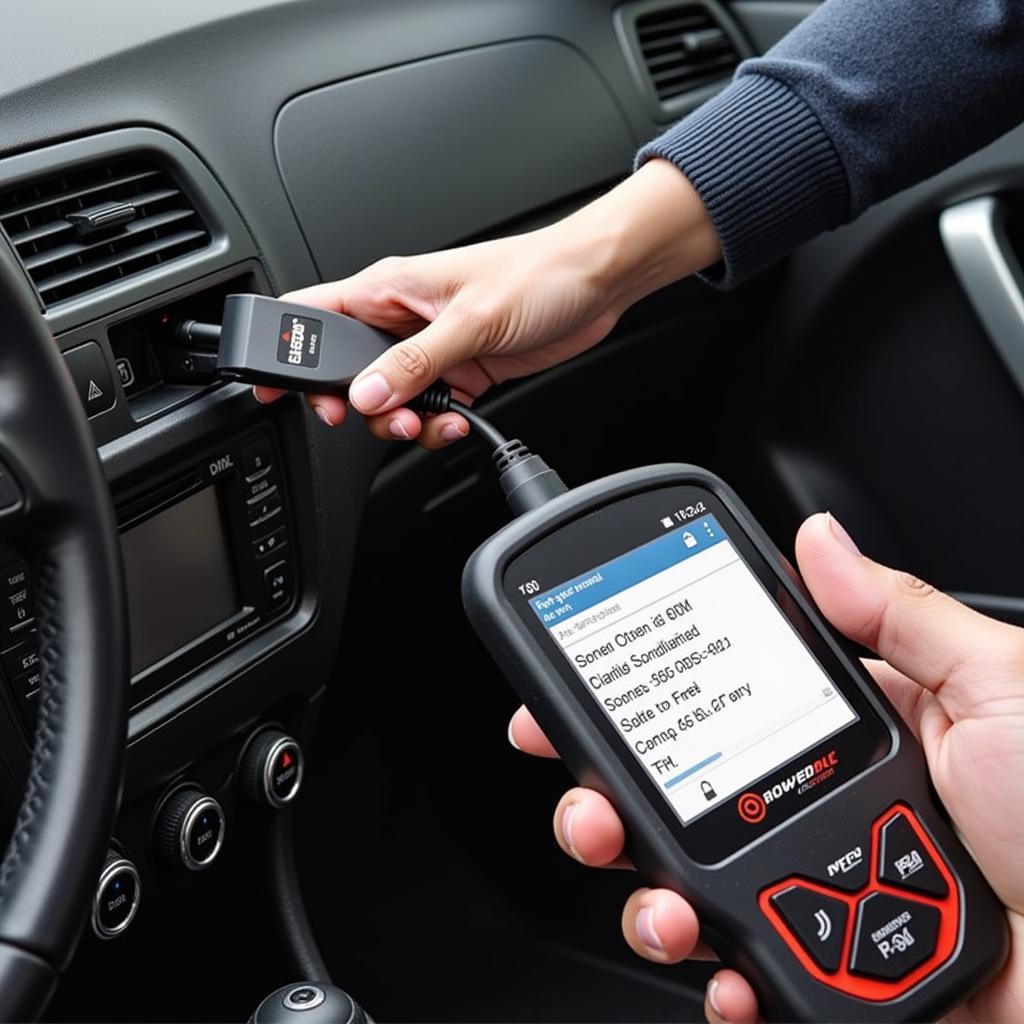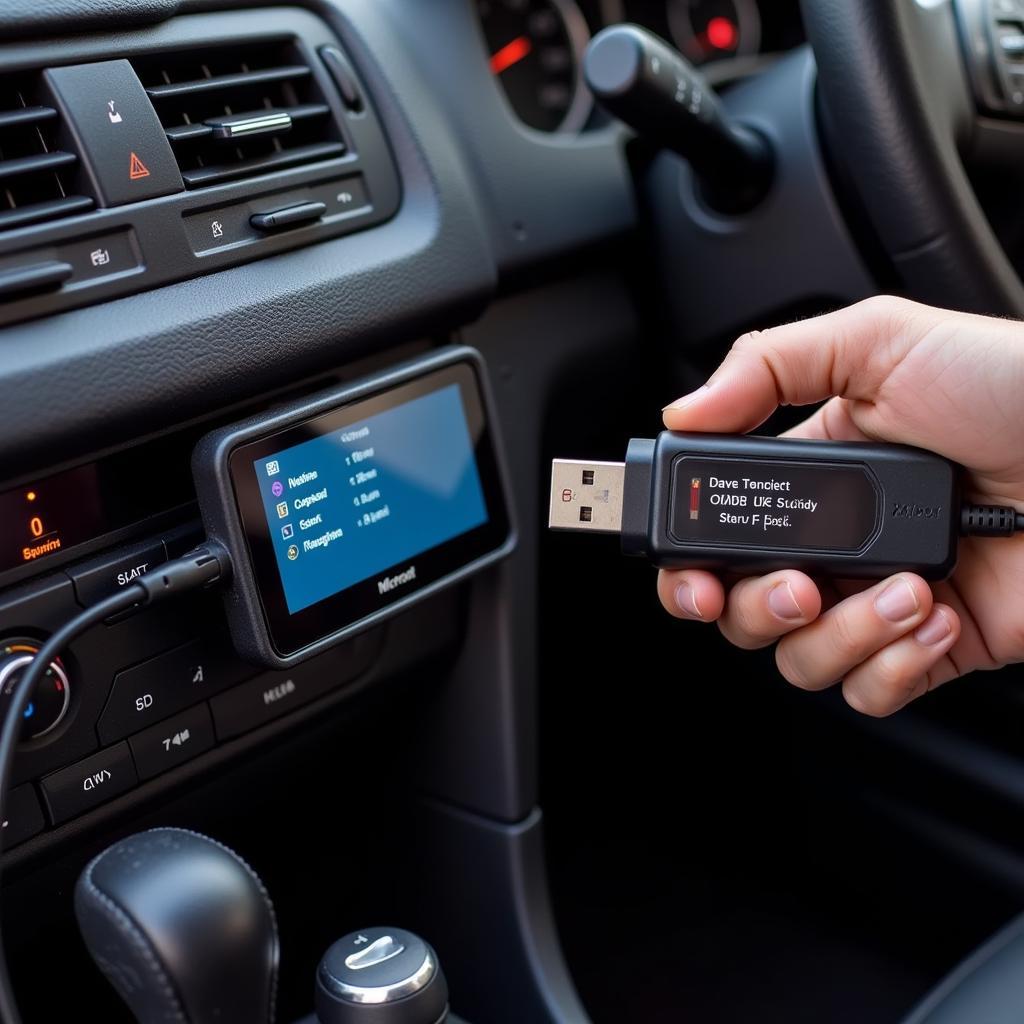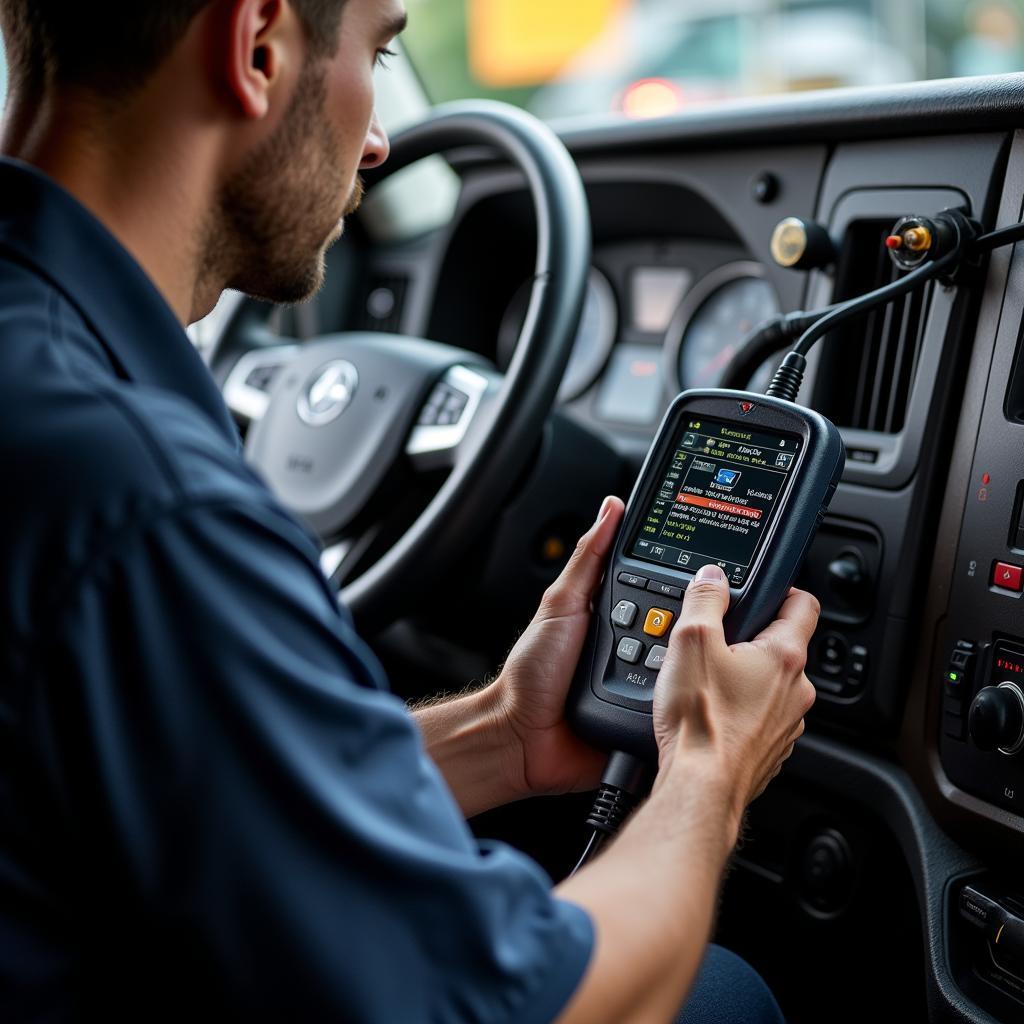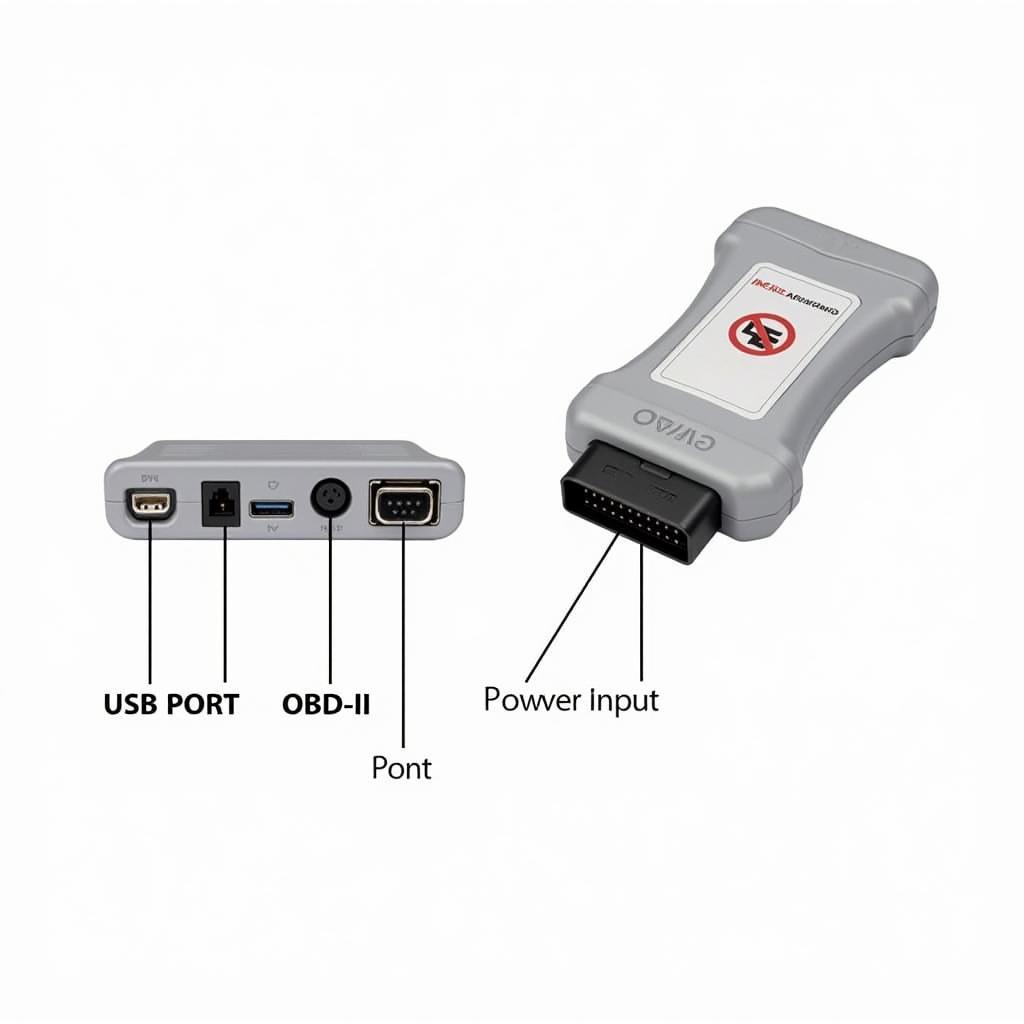Nội dung bài viết
Learning how to use an engine diagnostic tool can save you hundreds, if not thousands, of dollars in car repair costs. These tools, often called OBD2 scanners, allow you to tap into your car’s computer and decipher those cryptic trouble codes that illuminate your check engine light. In this guide, we’ll explore the ins and outs of using an engine diagnostic tool, empowering you to diagnose and potentially fix car problems yourself. Let’s dive in.
 Connecting an OBD2 Scanner to a Car's Diagnostic Port
Connecting an OBD2 Scanner to a Car's Diagnostic Port
Understanding Your Engine Diagnostic Tool
Before you begin using your diagnostic tool, it’s helpful to understand the basics. What exactly is an OBD2 scanner, and what can it do? OBD2 stands for On-Board Diagnostics, generation two. It’s a standardized system used in vehicles manufactured since 1996 in the US. Your engine diagnostic tool acts as a bridge between your car’s computer and you. It allows you to read diagnostic trouble codes (DTCs), which are essentially error messages stored in your car’s computer. These codes indicate specific problems with your vehicle’s engine, transmission, or emissions system. You can learn more about different trouble codes at diagnostic scan tool codes.
Types of Engine Diagnostic Tools
Several types of engine diagnostic tools are available, ranging from simple code readers to advanced professional scanners. car diagnostics tool app are increasingly popular, offering a cost-effective alternative. Choosing the right tool depends on your needs and technical skills.
How to Use an Engine Diagnostic Tool: A Step-by-Step Guide
- Locate the OBD2 port: The OBD2 port is typically located under the dashboard on the driver’s side. It’s a 16-pin trapezoidal connector.
- Connect the diagnostic tool: Plug the diagnostic tool into the OBD2 port.
- Turn the ignition on: Turn the ignition key to the “on” position, but do not start the engine. This powers up the car’s computer and the diagnostic tool.
- Read the codes: Follow the instructions on your specific diagnostic tool to read the DTCs. Most tools will display the codes on a screen.
- Interpret the codes: Once you have the codes, you need to interpret them. A good diagnostic tool may provide some basic definitions, but you can also consult a repair manual or look up the codes online.
- Clear the codes: After addressing the issue, you can use the diagnostic tool to clear the codes. This resets the check engine light.
What if I Can’t Figure Out the Problem?
Even with an engine diagnostic tool, diagnosing car problems can be challenging. If you’re struggling, don’t hesitate to seek professional help. A qualified mechanic can use more advanced diagnostic equipment and their expertise to pinpoint the issue. Remember, understanding how to use an engine diagnostic tool is a powerful skill, but it doesn’t replace the knowledge and experience of a trained technician.
If you’re looking for recommendations on a good OBD2 scanner, you can find some helpful information here: best obd2 diagnostic tool 2020.
“Using a diagnostic tool is like having a conversation with your car. It tells you what’s wrong, so you can take the right steps to fix it.” – David Miller, Automotive Engineer
How to Choose the Right Diagnostic Tool
With a variety of diagnostic tools on the market, selecting the one that meets your specific needs can be daunting. Factors like budget, technical skills, and vehicle type all play a role. For instance, if you’re working on a diesel engine, you might consider researching tools specifically designed for that purpose, like information on the dd15 diagnostic tool. Or, you might be interested in tools that work seamlessly with your computer system, such as the dell systems service and diagnostic tools media for windows.
Conclusion
Knowing how to use an engine diagnostic tool is an invaluable asset for any car owner. It empowers you to take control of your vehicle’s maintenance and potentially save money on repairs. By following this guide, you can confidently use your diagnostic tool to identify and address car problems. If you require any assistance or have further questions, feel free to connect with us at ScanToolUS. You can reach us at +1 (641) 206-8880 or visit our office at 1615 S Laramie Ave, Cicero, IL 60804, USA. We’re here to help!



